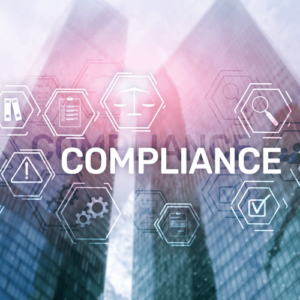Auditing and Monitoring
Original price was: $150.00.$75.00Current price is: $75.00.
⭐⭐⭐⭐⭐ “The course provided a comprehensive overview of auditing. The practical examples were particularly helpful.” – Sarah Johnson, Compliance Officer
Course Description: Auditing and Monitoring
In the intricate world of business compliance and governance, the “Auditing and Monitoring” course stands as an essential guide. Designed for professionals in auditing, accounting, compliance, and risk management, this course provides an in-depth understanding of the principles and practices of effective auditing and monitoring. It emphasizes practical skills and up-to-date methodologies to conduct successful audits and ensure continuous monitoring of business processes.
Learning Objectives
Upon completion of this course, participants will be able to:
- Understand the Fundamentals: Grasp key concepts, principles, and purposes of auditing and monitoring.
- Develop Auditing Skills: Learn to plan, execute, and report on audits effectively.
- Risk Assessment and Management: Identify, assess, and manage risks in various business scenarios.
- Compliance and Regulatory Knowledge: Stay updated with current compliance standards and regulatory requirements.
- Implement Monitoring Strategies: Establish ongoing monitoring mechanisms for continuous process improvement.
- Use of Technology in Auditing: Learn about the latest technological tools and software in auditing and monitoring.
Benefits of the Course
- Enhanced Professional Competence: Gain the skills and knowledge to perform high-quality audits.
- Career Advancement: Equip yourself with in-demand skills that are essential in many industries.
- Risk Mitigation: Learn how to identify and manage risks, protecting businesses from potential threats.
- Regulatory Compliance: Ensure that your organization or clients adhere to relevant laws and regulations.
- Networking Opportunities: Connect with professionals from various industries and share experiences and best practices.
Detailed Curriculum
Introduction to Auditing and Monitoring:
Purpose and importance
Types of audits: internal, external, compliance, etc.
Planning and Conducting Audits:
Audit planning and preparation
Techniques for effective auditing
Data collection and analysis
Risk Assessment in Auditing:
Identifying and assessing risks
Risk management strategies
Compliance and Regulatory Frameworks:
Understanding legal and regulatory requirements
Compliance audits
Reporting and Follow-up:
Preparing audit reports
Recommendations and follow-up actions
Monitoring and Continuous Improvement:
Setting up monitoring systems
Process improvement techniques
Technology in Auditing:
Utilizing software and tools
The role of data analytics in auditing
Testimonials
⭐⭐⭐⭐⭐ “The course provided a comprehensive overview of auditing. The practical examples were particularly helpful.” – Sarah Johnson, Compliance Officer
⭐⭐⭐⭐⭐ “As a new auditor, this course was instrumental in shaping my approach to risk management and audit planning.” – Michael Lee, Junior Auditor
⭐⭐⭐⭐⭐ “Highly recommend for anyone in risk management. The sections on technology and continuous monitoring were eye-opening.” – Rachel Kim, Risk Manager
Glossary of Key Terms for Auditing and Monitoring
1. Audit: An official inspection of an organization’s accounts, typically by an independent body.
2. Compliance: Adherence to laws, regulations, guidelines, and specifications relevant to the business.
3. Risk Management: The process of identifying, assessing, and controlling threats to an organization’s capital and earnings.
4. Internal Audit: A dynamic process of assessing and improving the effectiveness of risk management, control, and governance processes within an organization.
5. External Audit: An independent examination of financial information of any entity, whether profit-oriented or not, irrespective of its size or legal form.
6. Compliance Audit: A comprehensive review of an organization’s adherence to regulatory guidelines.
7. Risk Assessment: The systematic process of evaluating the potential risks that may be involved in a projected activity or undertaking.
8. Monitoring: The continuous or repeated observation of a process or quality over a period of time for evaluation.
9. Data Analytics in Auditing: The process of using data analysis tools and technology to analyze, monitor, and audit financial data.
10. Audit Planning: The process of preparing a roadmap for conducting an effective and efficient audit.
11. Regulatory Framework: A system of regulations and the means to enforce them, established by a government or other institution.
12. Audit Report: A formal opinion, or disclaimer thereof, issued by an auditor as a result of an audit.
13. Continuous Improvement: An ongoing effort to improve products, services, or processes over time.
14. Internal Control: A process, effected by an entity’s board of directors, management, and other personnel, designed to provide reasonable assurance regarding the achievement of objectives.
15. Financial Audit: An examination of the accuracy and relevancy of a firm’s or individual’s financial records.





